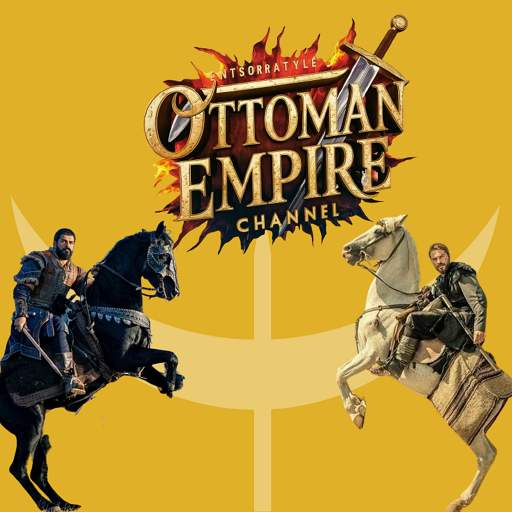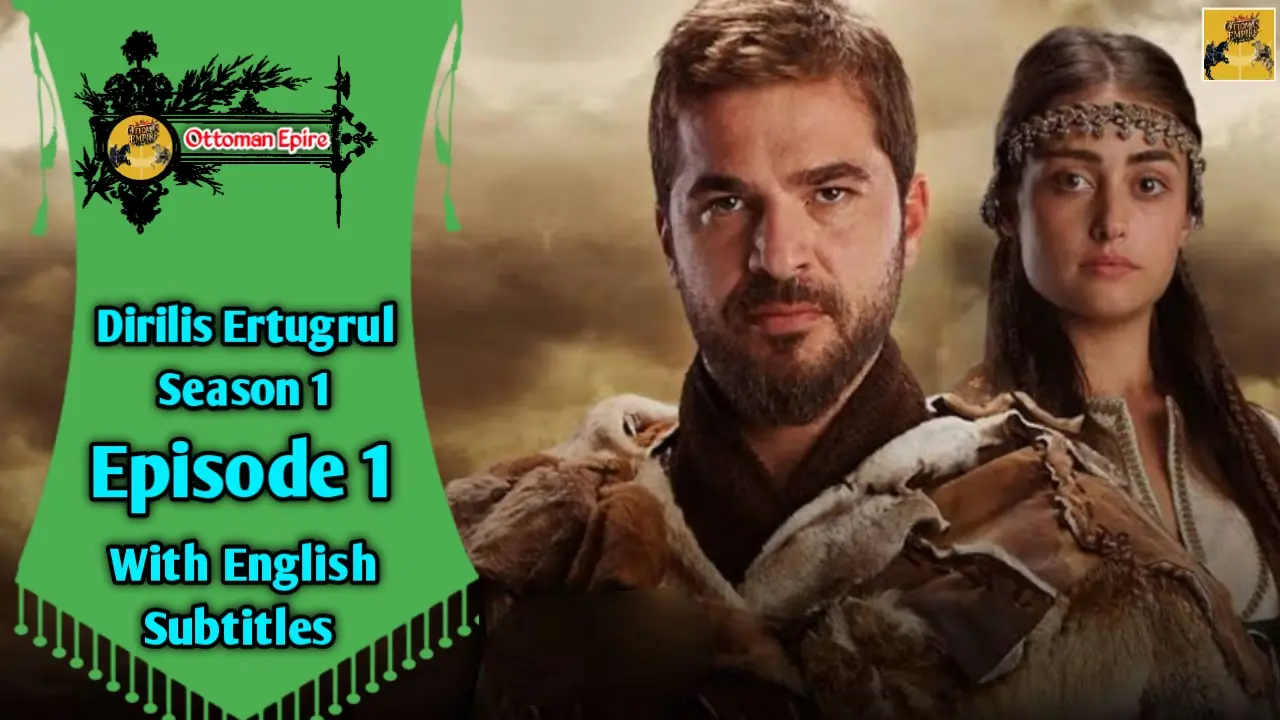Dirilis Ertugrul Season 1 Episode 1
Diriliş Ertuğrul: The Kayı Tribe Faces New Threats and Decisions in Season 1 Episode 1
The inaugural episode of Diriliş: Ertuğrul sets the stage for a captivating tale of courage, strategy, and resilience. As the Mongol threat looms over Anatolia, the Kayı tribe struggles to find a safe homeland. Unable to migrate from a Selçuklu plateau due to territorial restrictions, they are trapped by harsh winter conditions and a crippling famine. This episode not only introduces the physical and political challenges the tribe faces but also explores the emotional and moral dilemmas that define their leadership and community dynamics.
Dirilis Ertugrul Season 1 Episode 1
The episode opens with the Kayı tribe grappling with the dual hardships of winter and scarcity. The harsh climate has frozen their lands, making farming impossible, while food shortages push the tribe to the brink of survival. This environmental pressure intensifies internal tensions and forces the tribal leaders to make difficult decisions. The depiction of their struggle is both realistic and symbolic, representing the enduring human battle against nature and circumstance.
The Kayı Tribe’s Predicament: Winter and Famine
Gündoğdu, the eldest son of Süleyman Şah, emerges as a proactive leader, suggesting that the tribe send a delegation to Halep during the upcoming toy (a traditional gathering of Turkic tribes). His proposal reflects both strategic foresight and a desire to preserve the tribe’s future. The episode emphasizes the weight of leadership and the delicate balance between courage and caution, as every decision carries consequences for the entire community.
Ertuğrul’s Heroism and the Rescue of a Muslim Family
Parallel to the Kayı tribe’s collective challenges, Ertuğrul embarks on a personal journey that highlights his valor and moral compass. While hunting with his alps (elite warriors), he discovers a Muslim family under the threat of Crusader oppression. Demonstrating his skill and bravery, Ertuğrul successfully rescues the family and brings them to the tribe.
The introduction of Halime, the daughter of the rescued family, adds a layer of emotional complexity. Her presence ignites a spark in Ertuğrul’s heart, foreshadowing future personal developments. The narrative elegantly intertwines romance with political tension, showing that every new arrival in the tribe has the potential to shift existing alliances and provoke unforeseen challenges.
Political Tensions and Selçuklu Authority
As the tribe adjusts to the arrival of the rescued family, the political undertone of the episode becomes evident. Kara Toygar, a Selçuklu commander manipulated by Crusader schemes, demands the handover of the family. His threat to crush the Kayı tribe with military force demonstrates the precarious position of minor tribes under the Selçuklu empire.
The episode subtly explores themes of loyalty, authority, and diplomacy. While Kara Toygar represents external pressures, Süleyman Şah embodies measured leadership, weighing justice and survival before making any decision. This conflict underscores a recurring motif in the series: the struggle between external political pressures and internal tribal autonomy.
Internal Debate and Strategic Decisions
At the tribal toy, the episode delves into intense discussions among the Kayı leadership. The council deliberates over whether to comply with Kara Toygar’s demands or protect the family at all costs. These scenes highlight the psychological complexity of leadership and illustrate the intricate balance between ethics, politics, and survival.
Ertuğrul’s counsel and moral integrity influence the council, emphasizing that true leadership is not merely about power but about protecting the vulnerable and making principled choices. These debates also serve as a narrative device to showcase the tribe’s culture of consultation and communal decision-making, which has historical roots in Turkic tribal governance.
Hidden Identities and Foreshadowing Future Conflicts
The rescued family’s hidden truths slowly emerge, hinting at a larger web of intrigue. Their concealed identities not only endanger themselves but also the entire Kayı tribe. This narrative thread foreshadows future conflicts and adventures, creating suspense and keeping the audience invested in the story’s progression.
The episode masterfully blends personal stories with larger political and military narratives, illustrating how individual actions can have far-reaching consequences. Ertuğrul’s personal bravery and the family’s mysterious background converge to drive the tribe toward unforeseen challenges, setting a foundation for epic storytelling.
Historical and Cultural Context
Understanding the historical backdrop enriches the viewing experience. During the 13th century, Mongol invasions disrupted the stability of Anatolian tribes, and Selçuklu authorities often faced internal corruption and external manipulation. The episode accurately portrays these dynamics, highlighting the fragile balance between tribal independence and imperial oversight.
Moreover, the depiction of traditional gatherings like the toy, tribal hierarchies, and hunting practices provides insight into the social fabric of Turkic tribes. By embedding these cultural elements, the series offers viewers both entertainment and education about the era’s customs and values.
Character Development: Ertuğrul and Gündoğdu
Ertuğrul and Gündoğdu are positioned as contrasting yet complementary figures. Ertuğrul represents action, moral courage, and foresight, often making decisions that challenge norms but prioritize justice. Gündoğdu, while strategic, leans toward conventional leadership and the preservation of order. Their dynamic creates tension and sets the stage for character growth in subsequent episodes.
Halime’s introduction adds emotional depth, illustrating how personal relationships intertwine with leadership responsibilities. Ertuğrul’s growing affection for her also serves as a narrative catalyst, motivating him to act decisively in protecting the tribe and those under his care.
Military Strategy and Threat Analysis
The episode highlights the precarious military position of small tribes under larger political powers. Kara Toygar’s threat of force is not merely a plot device but an illustration of historical realities where tribal survival depended on tactical alliances, cunning, and negotiation.
Ertuğrul’s approach demonstrates effective asymmetric warfare strategy: utilizing knowledge of terrain, loyalty of warriors, and decisive action to counter stronger adversaries. These tactical elements offer viewers insight into medieval tribal warfare and leadership under duress.
Symbolism and Modern Lessons
Beyond the historical narrative, the episode carries universal themes relevant today. The challenges faced by the Kayı tribe, scarcity, external threats, moral dilemmas—mirror modern struggles of communities and leaders under pressure. Themes of courage, ethical decision-making, and protecting the vulnerable resonate across eras.
The interplay between individual heroism (Ertuğrul) and collective wisdom (tribal council) teaches viewers that balance between personal initiative and communal consensus is crucial in leadership.
Episode Recap Table
| Main Event | Details | Impact | Character Involved |
|---|---|---|---|
| Kayı Tribe’s Dilemma | Harsh winter and famine trap the tribe | Forces strategic decisions | Süleyman Şah, Gündoğdu |
| Rescue Mission | Ertuğrul saves Muslim family from Crusaders | Introduces Halime, emotional tension | Ertuğrul |
| Political Threat | Kara Toygar demands the family | Raises stakes for tribe’s survival | Kara Toygar |
| Tribal Council | Debate on handing over family | Highlights tribal leadership & ethics | Süleyman Şah, Council |
Episode Highlights in Bullet Points
- Kayı tribe trapped by winter and famine.
- Gündoğdu proposes sending a delegation to Halep.
- Ertuğrul rescues a Muslim family from Crusaders.
- Halime arrives, stirring Ertuğrul’s heart.
- Kara Toygar threatens the tribe over the rescued family.
- Tribal council debates ethical vs. strategic decisions.
- Süleyman Şah contemplates the tribe’s safety and morality.
- Hidden identities of the family foreshadow future conflict.
Frequently Asked Questions (FAQs)
Süleyman Şah is the Kayı Bey and the tribe’s respected leader.
The Selçuklu plateau they inhabit restricts their movement, and winter plus famine prevents relocation.
He rescues a Muslim family from the Crusaders, including Halime.
He demands the family be handed over or threatens to crush the Kayı tribe with his army.
Hidden identities and political tension foreshadow upcoming conflicts and adventures for the Kayı tribe.
Conclusion
Episode 1 of Diriliş: Ertuğrul is a compelling mix of historical realism, character development, and suspense. It introduces viewers to the trials of the Kayı tribe, the bravery of Ertuğrul, and the complex political landscape of 13th-century Anatolia. The episode skillfully balances action, emotion, and strategy, leaving audiences eager for the next installment.
What are your thoughts on Ertuğrul’s decisions and the Kayı tribe’s challenges? Share your predictions for upcoming episodes in the comments below, how do you think these events will shape the tribe’s destiny?
- Kurulus Osman Season 6 Episode 173 A Turning Point in the Story
- Kurulus Osman Season 6 Episode 165 A Story of Unity and Leadership
- Selahaddin Eyyubi Season 2 Episode 35 Betrayal, Strategy, and Political Intrigue
- Selahaddin Eyyubi Season 2 Episode 33 Uncovers Hidden Plots in Cairo
- Mehmed Fetihler Sultani Season 2 Episode 20 Tensions Rise Before the Siege

